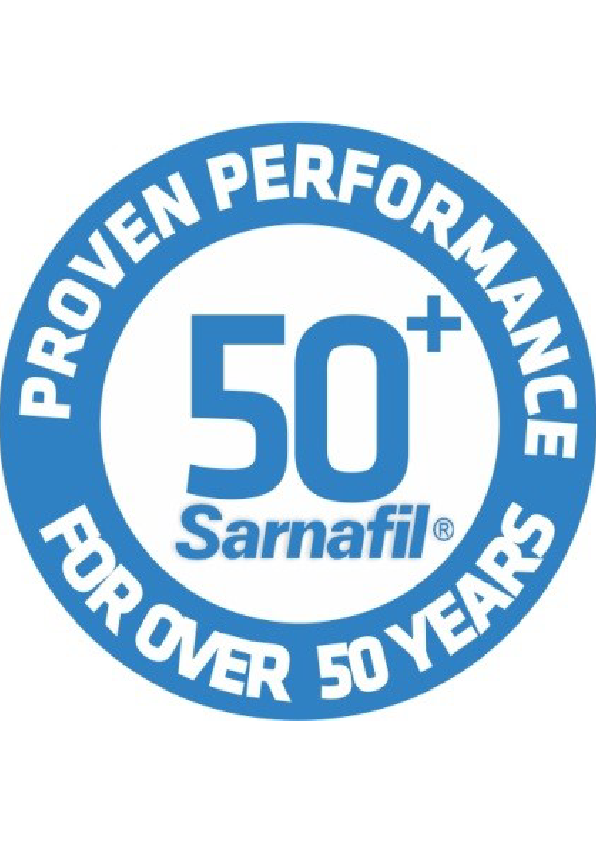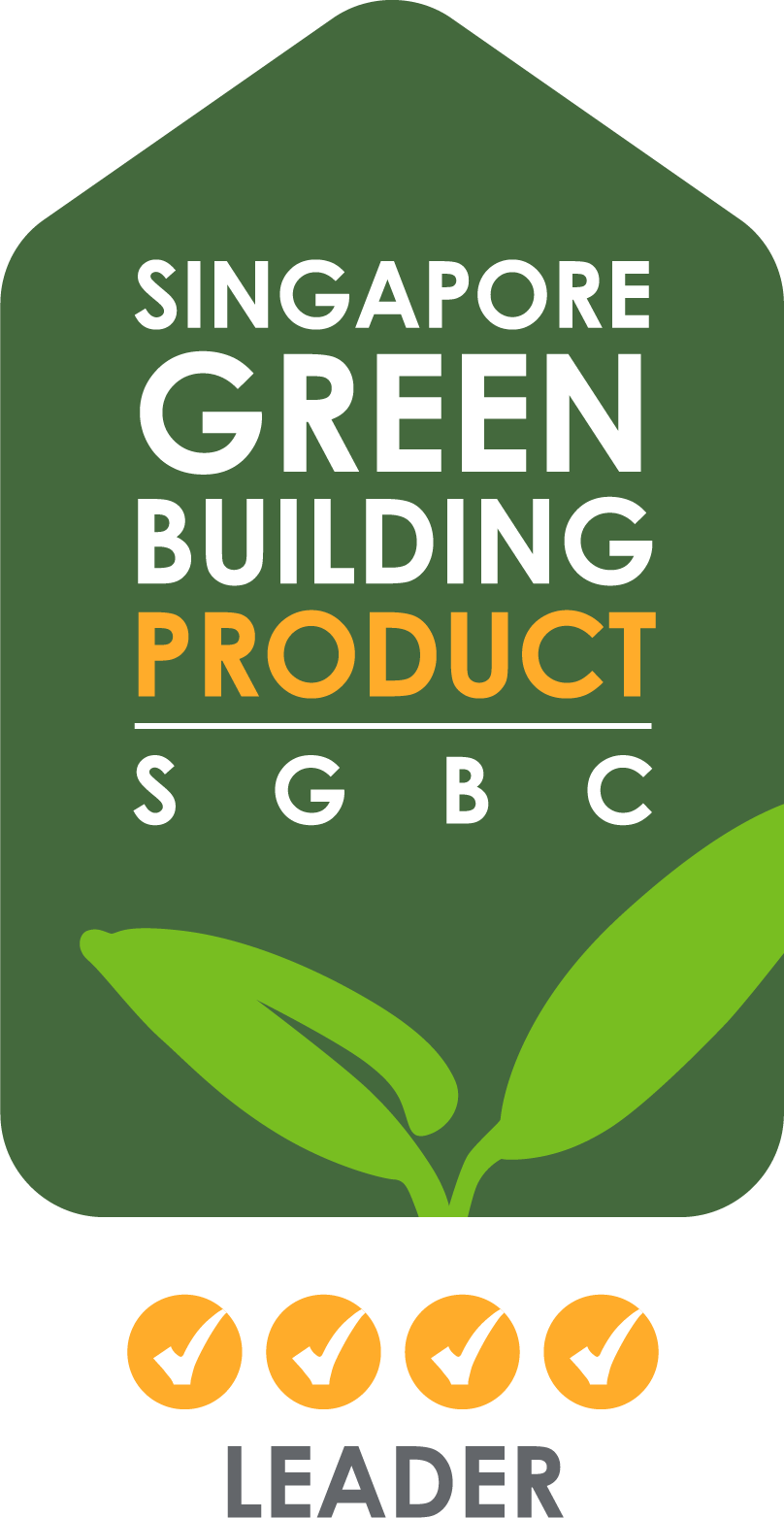Sarnafil® TS 77-15
Sarnafil® TS 77-15 (thickness 1.5 mm) is a polyester reinforced, multi-layer, synthetic roof waterproofing sheet based on flexible polyolefins (FPO) containing ultraviolet light stabilizers, flame retardant and an inlay of glass non-woven according to EN 13956. Sarnafil® TS 77-15 is produced with an inlay of glass non-woven for dimensional stability and a polyester reinforcement for high strength. Sarnafil® TS 77-15 is a hot air weldable roof membrane formulated for direct exposure and designed to use in all global climatic conditions.
- Proven performance over decades
- Various colours available
- Resistant to permanent UV exposure
- High dimensional stability due to glass fleece inlay
- Resistant to permanent wind exposure
- Resistant to all common environmental influences
- Resistant to micro-organisms
- Resistant to root penetration
- Compatible to old bitumen
- Hot air weldable


Usage
Waterproofing membrane for:- Sarnafil® TS 77-15 L may only be used by experienced professionals.
- Mechanically fastened roofing systems
Advantages
- Proven performance over decades
- Various colours available
- Resistant to permanent UV exposure
- High dimensional stability due to glass fleece inlay
- Resistant to permanent wind exposure
- Resistant to all common environmental influences
- Resistant to micro-organisms
- Resistant to root penetration
- Compatible to old bitumen
- Hot air weldable
Packaging
Sarnafil® TS 77-15 standard rolls are wrapped individually in a blue PE-foil.
| Packing unit | See price list |
| Roll length | 20.00 m |
| Roll width | 2.00 m |
| Roll weight | 66.00 kg |
Colour
| Surface | Matt |
| Colours | |
| Top surface: | Beige Window grey (nearest RAL 7040) Anthracite (nearest RAL 7016) Reseda green (nearest RAL 6011) Copper brown (nearest RAL 8004) Traffic white (nearest RAL 9016) |
| Bottom surface | Black |
Product Details
ENVIRONMENTAL INFORMATION
- Conformity with LEED v4 SSc 5 (Option 1): Heat Island Reduction - Roof (only traffic white)
- Conformity with LEED v4 MRc 2 (Option 1): Building Product Disclosure and Optimization - Environmental Product Declarations
- Conformity with LEED v4 MRc 3 (Option 2): Building Product Disclosure and Optimization - Sourcing of Raw Materials
- Conformity with LEED v4 MRc 4 (Option 2): Building Product Disclosure and Optimization - Material Ingredients
- Conformity with LEED v2009 SSc 7.2 (Option 1): Heat Island Effect - Roof
- Conformity with LEED v2009 MRc 4 (Option 2): Recycled Content
- IBU Environmental Product Declaration (EPD) available
APPROVALS / STANDARDS
- British Board of Agrément (BBA) certified
- CE Marking and Declaration of Performance to EN 13956 - Polymeric sheets for roof waterproofing
- Compliance test Sarnafil® G 410-TS-77, FM Approvals, Certificate No. 3047304
- Certified Green Label by Singapore Green Building Council, Certificate Nbr. SGBP 3498
Chemical Base
Flexible Polyolefins (FPO)
Shelf Life
5 years from date of production.
Storage Conditions
Product must be stored in original unopened and undamaged sealed packaging in dry conditions and temperatures between +5 °C and +30 °C. Store in a horizontal position. Do not stack pallets of the rolls on top of each other, or under pallets of any other materials during transport or storage. Always refer to packaging.
Product Declaration
| EN 13956 |
Visible Defects
| Pass | (EN 1850-2) |
Length
| 20 m (-0 % / +5 %) | (EN 1848-2) |
Width
| 2 m (-0.5 % / +1 %) | (EN 1848-2) |
Effective Thickness
| 1.5 mm (-5 % / +10 %) | (EN 1849-2) |
Straightness
| ≤ 30 mm | (EN 1848-2) |
Flatness
| ≤ 10 mm | (EN 1848-2) |
Mass per Unit Area
| 1.65 kg/m² (-5 % / +10 %) | (EN 1849-2) |
System Structure
The following products must be considered for use depending on roof design:
- Sarnafil® T 66-15 D Sheet for detailing
- Sarnafil® TS 77 strips
- Sarnafil® T Metal Sheet
- Sarnafil® T Welding Cord
- Sarnabar® / S-U Bar with Sarnafast®
- Sarnafil® T Prep / Sarnafil® T Wet Task Set
- Sarnacol® T 660
- Solvent T 660
- Sarnafil® T Clean
Wide range of accessories is available e.g. prefabricated parts, roof drains, scuppers, walkway pads and decor profiles.
Compatibility
Sarnafil® TS 77-15 may be installed on all thermal insulations and levelling layers suitable for roofing. No additional separation layer is required.
Sarnafil® TS 77-15 is suitable for installation directly on top of existing, carefully cleaned, levelled bituminous roofing, e.g. re-roofing over old flat roofs. Colour changes in membrane surface may occur if in direct contact with bitumen.
Resistance to Impact
| Hard substrate | ≥ 700 mm |
| Soft substrate | ≥ 900 mm |
Hail Resistance
| Rigid substrate | ≥ 20 m/s |
| Flexible substrate | ≥ 30 m/s |
Resistance to Static Load
| Soft substrate | ≥ 20 kg |
| Rigid substrate | ≥ 20 kg |
Resistance to Root Penetration
| Pass | (EN 13948) |
Tensile Strength
| Longitudinal (md)1) | ≥ 1000 N/50 mm |
| Transversal (cmd)2) | ≥ 900 N/50 mm |
1) md = machine direction
2) cmd = cross machine direction
Elongation
| Longitudinal (md)1) | ≥ 13 % |
| Transversal (cmd)2) | ≥ 13 % |
1) md = machine direction
2) cmd = cross machine direction
Dimensional Stability
| Longitudinal (md)1) | ≤ |0.2| % |
| Transversal (cmd)2) | ≤ |0.1| % |
1) md = machine direction
2) cmd = cross machine direction
Tear Strength
| Longitudinal (md)1) | ≥ 300 N |
| Transversal (cmd)2) | ≥ 300 N |
1) md = machine direction
2) cmd = cross machine direction
Joint Peel Resistance
| Failure mode: C, no failure of the joint | (EN 12316-2) |
Joint Shear Resistance
| ≥ 500 N/50 mm | (EN 12316-2) |
Foldability at Low Temperature
| ≤ -35 °C | (EN 495-5) |
External Fire Performance
| (EN 1187) | |
| BROOF(t1) < 20° | (EN 13501-5) |
Reaction to Fire
| Class E | (EN ISO 11925-2, classification to EN 13501-1) |
Effect of Liquid Chemicals, Including Water
| On request | (EN 1847) |
Exposure to Bitumen
| Pass3) | (EN 1548) |
3) Sarnafil® T is compatible to old bitumen
Resistance to UV Exposure
| Pass (> 5000 h / grade 0) | (EN 1297) |
Water Tightness
| Pass | (EN 1928) |
Solar Reflectance
| Colour | Initial | 3 years aged | Test Institute |
| Beige | B0.64 | C0.56 | CRRC |
| White RAL 9016 | F0.79 | G0.68 | CRRC |
Thermal Emittance
| Colour | Initial | 3 years aged | Test Institute |
| Beige | 0.91 | 0.87 | CRRC |
| White RAL 9016 | 0.91 | 0.87 | CRRC |
Solar Reflectance Index
| Colour | Initial | 3 years aged | Test Institute |
| Beige | 78 | 66 | CRRC |
| White RAL 9016 | 99 | 82 | CRRC |
CRRC tested products are listed in Cool Roof Rating Council (CRRC) product date base.
USGBC LEED Rating
| Colour | Initial | 3 years aged |
| RAL 9016 | SRI > 82 | SRI > 64 |
| Beige | - | SRI > 64 |
Conform on the minimum requirements of LEED V4 SS credit 5 option 1 Heat Island reduction - Roof.
Application
Ambient Air Temperature
-20 °C min. / +60 °C max.
Substrate Temperature
-30 °C min. / +60 °C max.
EQUIPMENT
Hot welding overlap seams
Electric hot air welding equipment, such as hand held manual hot air welding equipment and pressure rollers or automatic hot air welding machines with controlled hot air temperature capability of a minimum +600 °C.
Recommended type of equipment:
▪ Manual: Leister Triac
▪ Automatic : Sarnamatic 681, Leister Varimat
▪ Semi-automatic: Leister Triac Drive
SUBSTRATE QUALITY
The substrate surface must be uniform, smooth and free of any sharp protrusions or burrs, etc. Sarnafil® TS 77-15 must be separated from any incompatible substrates / materials by an effective separation layer to prevent accelerated ageing. The supporting layer must be compatible to the membrane, solvent resistant, clean, dry and free of grease and dust. Metal sheets must be degreased with Solvent T 660 before adhesive
is applied.
APPLICATION
Installation procedure
Strictly follow installation procedures as defined in method statements, application manuals and working instructions which must always be adjusted to the actual site conditions.
Fixing method- General
The waterproofing membrane is installed by loose laying ( without stretching membrane or installing under tension) with mechanical fastening in seam overlaps or independent from overlaps. Overlap seams are hot welded using specialised hot air equipment.
Fixing method-Linear fastening (Sarnabar®)
Unroll the Sarnafil® TS 77-15 membrane, overlap by 80 mm, weld immediately and fix to the substructure by means of the Sarnabar® fasteners. The preferred type of fastening will be advised by Sika. The spacing of the fasteners is in accordance with the project specific Sika calculations. The perimeter piece ends must be secured with the Sarnabar® Load Distribution Plate. For protection fasten a piece of Sarnafil® TS 77-15 under bar end and plate. Leave a 10 mm clearance between bar ends. Do not fasten in hole nearest bar end. Cover the bar ends with a piece of Sarnafil® TS 77-15 and weld. After installation the Sarnabar® must immediately be made watertight with a Sarnafil® TS 77-15 cover strip. At upstands and at all penetrations, the Sarnafil® TS 77-15 membrane must be secured with a Sarnabar®. The 4 mm diameter S-Welding Cord protects the Sarnafil® TS 77-15 roof covering against tearing and peeling off by wind uplift.
Fixing method-Spot fastening (Sarnafast®)
Sarnafil® TS 77-15 must always be installed at right angles to the deck direction. Sarnafil® TS 77-15 is fixed by means of the Sarnafast® fasteners and barbed washers/tubes along the marked line, 35 mm from the edge of the membrane. Sarnafil® TS 77-15 is overlapped by 120 mm. The spacing of the fasteners is in accordance with the project specific Sika calculations. At upstands and at all penetrations, the Sarnafil® TS 77-15 membrane must be secured with a Sarnabar ®. The 4 mm diameter S-Welding Cord protects the Sarnafil® TS 77-15 roof covering against tearing and peeling off by wind uplift.
Hot welding overlap seams
Overlap seams must be welded by electric hot welding equipment. Welding parameters including temperature, machine speed, air flow, pressure and machine settings must be evaluated, adapted and checked on site according to the type of equipment and the climatic conditions prior to welding. The effective width of welded overlaps by hot-air must be a minimum 20 mm.
Testing overlap seams
The seams must be mechanically tested with screw driver (rounded edges) to ensure the integrity / completion of the weld. Any imperfections must be rectified by hot air welding.
